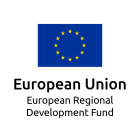Customizing advertising gadgets
A manufacturer of advertising gadgets with prints
Personalized advertising gadgets, custom printed lanyards, print on clothes, unique accessories for home and office
Custom Business Accessories
Many entrepreneurs decide to invest in advertising on the Internet or traditional media. However, it is worth remembering that, unlike non-durable advertising media, custom business accessories remain in circulation for many years, creating an impression of prestige among business partners and customers. What's more, marketing gadgets are distinguished by their practical advantages.
Promotional Lanyards with Logo
Business logo lanyards are one of the most popular advertising gadgets in modern business. Customized lanyards are perfect for trade fairs, conferences, public speeches, and business meetings. The opportunity of decorating them with prints with a logo, advertising slogan, or a company motto allows increasing awareness of your brand's existence, associating it with innovation and professionalism.
Personalised Wristbands
Personalized wristbands are an indispensable element of music festivals, sports events, company meetings, and other public events. However, few people know that they are also an excellent advertising medium. Low production costs, aesthetic appearance, and everyday functionality allow the printed wristbands to provide the possibility of expressing any promotional message. As a result, they work well as original corporate gifts for employees and customers.
Custom Printed Clothing
Promotional T shirts for special events, corporate T shirts for employees, backpacks and bags with prints, multifunctional scarves, and other accessories - the possibility of placing custom prints on them allows clothes to be one of the most-chosen advertising gadgets worldwide. High durability, unlimited personalization options, and practical advantages make custom company shirts with print especially popular. Don't hesitate and invest in the best business gadgets to take your company to the next level.


